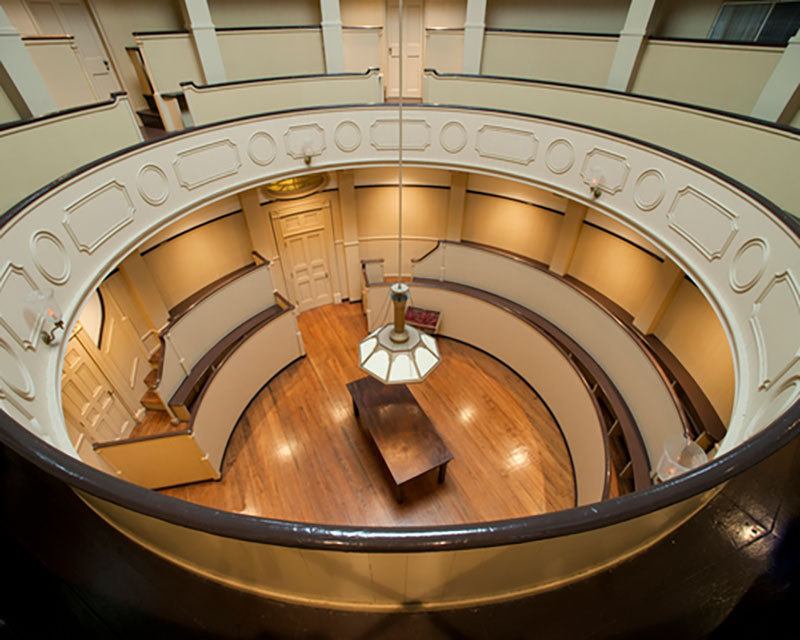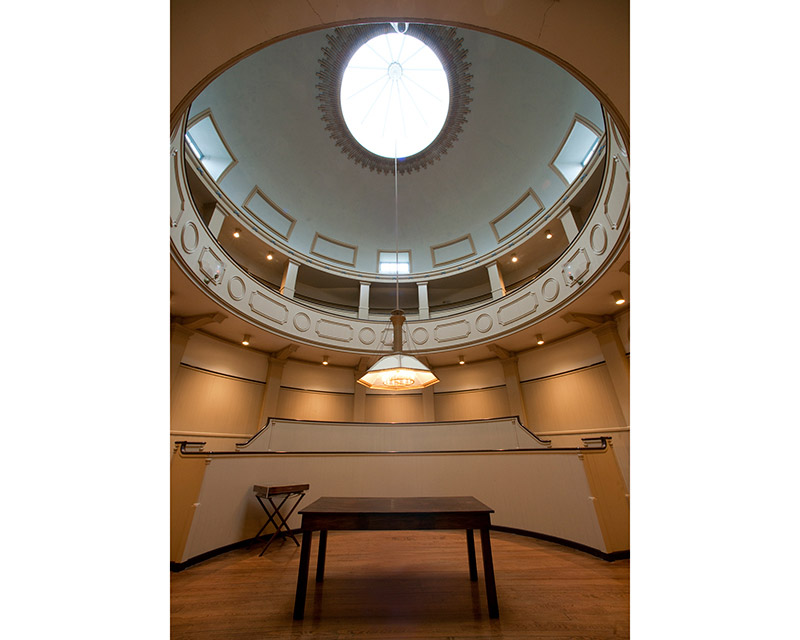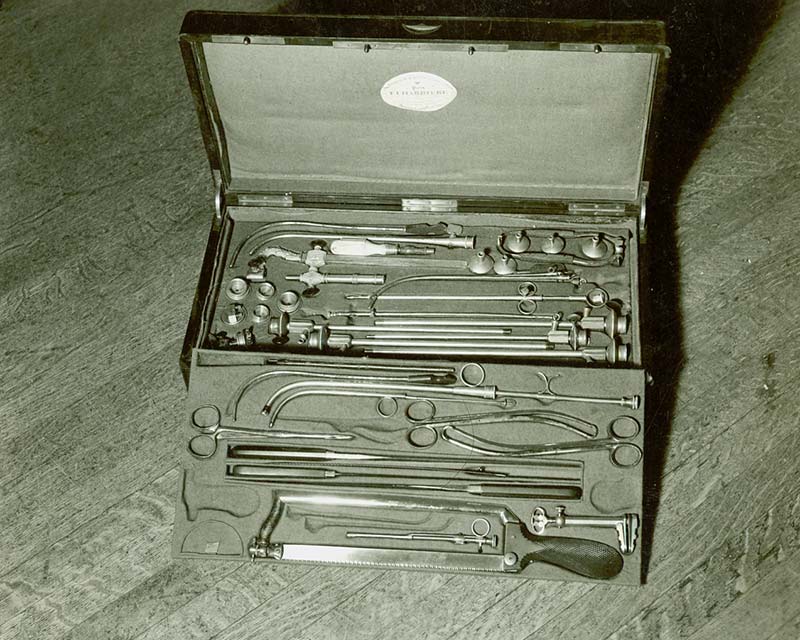Pennsylvania Hospital's Surgical Amphitheater: Surgery's Humble Beginnings
By: Margaret Vance, MSN, RN, CNOR, NPD-BC
Published: 8/30/2023
Taking a Step Back in Time to Surgical Origins
When you look around today’s OR, you may be inundated with new technology and constant enhancements to procedures. A focus on quality surgical care and expedited length of stays have promoted more minimally invasive procedures and innovative surgical techniques. While the developments in surgery are exciting, it is always fun to look back at the old yearbook photos. When you come to Pennsylvania Hospital, an entity of Penn Medicine, located in Philadelphia, you can take a step back in time to surgical origins.
Located in the historic Pine Building, the Surgical Amphitheater echoes the story of surgery’s humble beginnings. In 1804, the room functioned as an OR with plenty of space for observers and students to watch the surgeries performed (Photo 1). Imagine a time with no medical gas line hookups or electricity! Surgeries had to be performed during the day under the natural light from the dome above (Photo 2). (At least one could say the fire risk may have been minimal for these procedures.)

Photo 1. In 1804, the Surgical Amphitheater functioned as an OR with plenty of space for observers and students to watch the surgeries performed. Photo courtesy of Pennsylvania Hospital.

Photo 2. Surgeries in the Surgical Amphitheater had to be performed during the day under the natural light from the dome above. Photo courtesy of Pennsylvania Hospital.
Anesthesia also was not routinely used. Instead, analgesic was provided by a shot of whiskey or rum, paired with a bite block made of leather or bark. It was not until 1848 that anesthesia was first discussed and implemented into practice two years later. Even then, anesthesia was only administered on a case-by-case basis.
Surgery has advanced tremendously in the past few centuries, though it may surprise you to see that some of the instruments located in Dr. Philip Syng Physick’s instrument set resemble some items you see today (Photo 3). The past is important when considering the future of surgery and the effects that stand the test of time.

Photo 3. Dr. Philip Syng Physick’s instrument set. Photo courtesy of Pennsylvania Hospital.
Though perioperative nursing continues to evolve, we must always remember where we began. This solid foundation that you are creating will help to transition to competent and expert perioperative nurses. Keep your foundational theory and drive for patient safety—I can promise that those values will not rust over time!
AORN Resources
AORN members can access:
- Watchful Care: A History of America's Nurse Anesthetists - AORN Journal
- Doctoral Education in Nursing: History, Process, and Outcome - AORN Journal
- Images of Nurses: Perspectives from History, Art, and Literature - AORN Journal
- History Corner: Discovery and Detective Work - AORN Journal
- Lessons from history can serve us today - AORN Journal
- Perioperative Nurse Week: Its History and Its Future - AORN Journal
- History Corner: Perioperative Nursing in the Early 1900s - AORN Journal
- History Corner: Wash the Sand Out of the Sponges - AORN Journal

